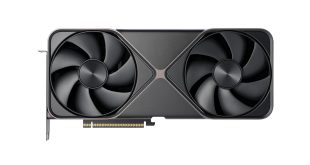While some chip manufacturers nail everything to the mast of DX11, it seems that industry daddy Intel has a completely different view on the graphics technology. Given Microsoft enabled the world with DX11 way back in October 2009, why does Intel have such a different view and are they right ? KitGuru dons the spy goggles and begins piecing together news from the big blue shredder.
Everything Intel does (and is going to do for some time to come), is laid out, nice and neat, for everyone to see. In terms of design and manufacturing, it believes that you perfect the process of making a chip using a certain lithographic technique, then you bring in a new design. This separation of (a) design change from (b) process change is known as Tick-Tock.
Right now, we are in the middle of a ‘Tock' cycle. The launch of the 2nd generation Intel Core processors (codenamed Sandy Bridge) uses the same 32nm process as Westmere, but the architecture itself has evolved.

This little graphic (borrowed/adapted from CanardPC) shows the next few beats of the metronome in a nice and simple fashion.

.
Because the Sandy Bridge graphics engine is DX10 only, then that means that the shrunken Ivy Bridge will not have DX11 either.
In a recent statement to IDG, Karen Regis (who is the consumer Consumer Client Marketing Manager at Intel) said, “…We will have DX11 capability built into our processor graphics before it's in the mainstream”.

So Sandy Bridge doesn't have it in 2011 and that means Ivy Bridge doesn't by early 2012, so the earliest chip would be Haswell later in 2012.
Parsing the Intel statement, “Haswell will have DX11 capability, just before DX11 becomes a mainstream technology in 2013”.
OK, so we have worked out what the statement means and it's clear, but is it correct?
The vast majority of systems (desktop + notebook) shipped have integrated graphics only.
KitGuru guesses that ‘mainstream' means that over 50% of the systems shipped will have DX11 technology.
Even if all of the non-integrated graphics systems shipped with a DX11 card, that still could not break the 50% mark.
With AMD Fusion solutions (mainboard with Fusion chip) likely to be way under $100 to the trade already, DX11 hardware of some description will begin to take a serious foothold in 2011. Decent DX11 performance, you would imagine, would happen from the second generation of Fusion processor onward – so the second half of 2011.
In light of that market penetration, Intel' saying that if every single AMD and nVidia graphic card shipped in 2012 is DX11 and AMD pushes as hard as it can with Fusion – the combined totals will still be under 50% by the end of 2012. Interesting. Very interesting.
KitGuru says: With the early DX11 games out in 2010, the way has been paved for a lot more releases toward Christmas 2011. BUT – and it is a BIG BUT – the console market is extremely strong and game companies like to follow the money. It will be interesting to see just how many ‘must have, triple A titles' are planned for the PC over the next 24 months. That will be the real key to success. If nVidia and AMD make a strong enough argument for DX11, then the notebook manufacturers will have little choice but to include the feature – either as a Fusion solution or discrete graphics chip. Ultimately, this becomes a battle of the Developer Relations teams from the chip giants. Will be fun to see the fur fly!
Comment below.
 KitGuru KitGuru.net – Tech News | Hardware News | Hardware Reviews | IOS | Mobile | Gaming | Graphics Cards
KitGuru KitGuru.net – Tech News | Hardware News | Hardware Reviews | IOS | Mobile | Gaming | Graphics Cards


When the 360 arrived on the scene five years ago, it helped kickstart multi-threaded gaming, but for the last couple years and next couples years consoles do nothing but hold the industry back while they concentrate on those abysmal motion controllers.
Intel has already said that IvyBridge will have DX11 when it launches in early 2012. While the tick-tock mantra about alternating shrink vs architecture changes makes sense for CPUs, Intel is being significantly more agressive with graphics architecture updates in order to catch up with the competition.